Audi Q6 e-tron vs BYD Tang – Which car suits you better?
Both models have their strengths – but which one suits you more?
Compare performance, efficiency, price and space directly: Audi Q6 e-tron or BYD Tang?
Costs and Efficiency:
Looking at overall running costs, both models reveal some interesting differences in everyday economy.
Audi Q6 e-tron has a slightly advantage in terms of price – it starts at 54400 £, while the BYD Tang costs 64300 £. That’s a price difference of around 9857 £.
In terms of energy consumption, the advantage goes to the Audi Q6 e-tron: with 15.60 kWh per 100 km, it’s clearly more efficient than the BYD Tang with 24 kWh. That’s a difference of about 8.40 kWh.
As for range, the Audi Q6 e-tron performs a bit better – achieving up to 656 km, about 126 km more than the BYD Tang.
Engine and Performance:
Power, torque and acceleration say a lot about how a car feels on the road. This is where you see which model delivers more driving dynamics.
When it comes to engine power, the BYD Tang has a hardly perceptible edge – offering 517 HP compared to 516 HP. That’s roughly 1 HP more horsepower.
In acceleration from 0 to 100 km/h, the Audi Q6 e-tron is somewhat quicker – completing the sprint in 4.30 s, while the BYD Tang takes 4.90 s. That’s about 0.60 s faster.
In terms of top speed, the Audi Q6 e-tron performs slightly better – reaching 230 km/h, while the BYD Tang tops out at 190 km/h. The difference is around 40 km/h.
There’s also a difference in torque: Audi Q6 e-tron pulls clearly perceptible stronger with 855 Nm compared to 680 Nm. That’s about 175 Nm difference.
Space and Everyday Use:
Cabin size, boot volume and payload all play a role in everyday practicality. Here, comfort and flexibility make the difference.
Seats: BYD Tang offers noticeable more seating capacity – 7 vs 5.
In curb weight, Audi Q6 e-tron is slightly lighter – 2200 kg compared to 2630 kg. The difference is around 430 kg.
In terms of boot space, the Audi Q6 e-tron offers convincingly more room – 526 L compared to 235 L. That’s a difference of about 291 L.
In maximum load capacity, the BYD Tang performs hardly perceptible better – up to 1655 L, which is about 126 L more than the Audi Q6 e-tron.
When it comes to payload, BYD Tang hardly perceptible takes the win – 575 kg compared to 540 kg. That’s a difference of about 35 kg.
Who wins the race?
The Audi Q6 e-tron proves to be is largely superior and therefore becomes our DriveDuel Champion!
Audi Q6 e-tron is the better all-rounder in this comparison.
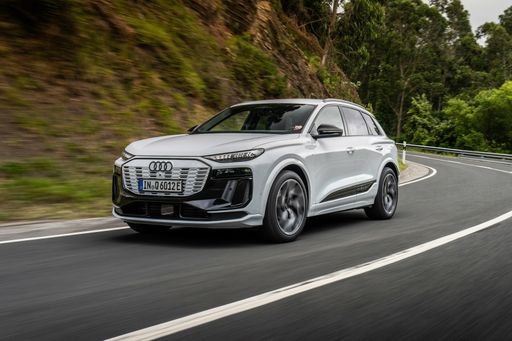
Audi Q6 e-tron
Audi Q6 e-tron
The Audi Q6 e-tron represents a significant step forward in the realm of electric vehicles, offering a perfect blend of cutting-edge technology and timeless design. With its spacious interior and advanced infotainment system, it provides both comfort and connectivity for the modern driver. The Q6 e-tron embodies Audi's commitment to sustainability without compromising on performance or luxury.
details @ audi-mediacenter.com
@ audi-mediacenter.com
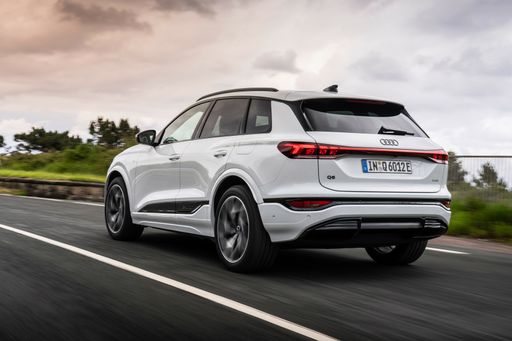 @ audi-mediacenter.com
@ audi-mediacenter.com
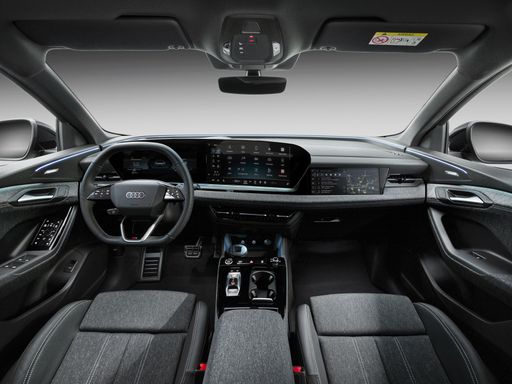 @ audi-mediacenter.com
@ audi-mediacenter.com
BYD Tang
The BYD Tang represents a bold entry into the competitive SUV market, blending cutting-edge technology with modern design aesthetics. Its spacious interior is complemented by high-quality materials and innovative features, making it a strong contender for families and tech enthusiasts alike. With an emphasis on sustainability, the Tang offers an eco-friendly driving experience without compromising on performance or luxury.
details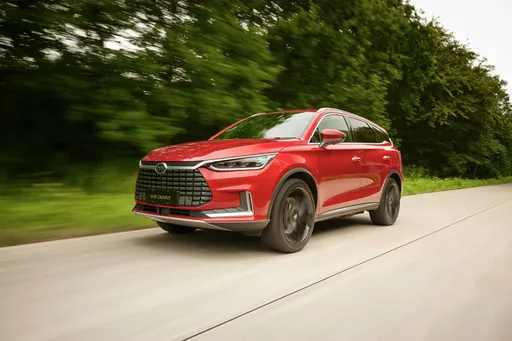 @ press.bydauto.be
@ press.bydauto.be
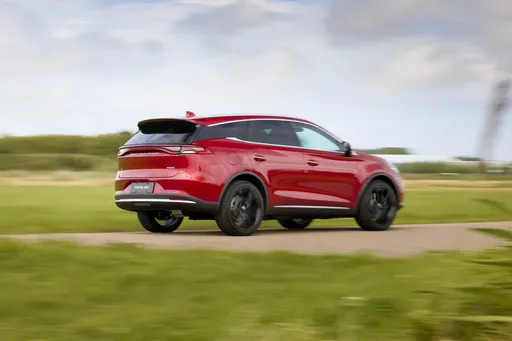 @ press.bydauto.be
@ press.bydauto.be
 @ press.bydauto.be
@ press.bydauto.be
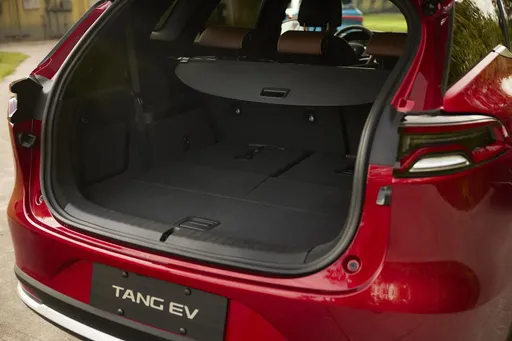 @ press.bydauto.be
@ press.bydauto.be
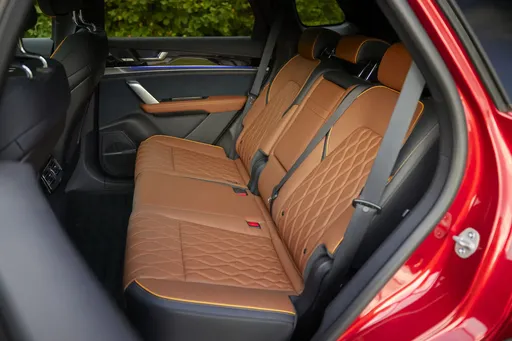 @ press.bydauto.be
@ press.bydauto.be

|

|
|
|
|
Costs and Consumption |
|
|---|---|
|
Price
54400 - 91900 £
|
Price
64300 £
|
|
Consumption L/100km
-
|
Consumption L/100km
-
|
|
Consumption kWh/100km
15.6 - 18.9 kWh
|
Consumption kWh/100km
24 kWh
|
|
Electric Range
482 - 656 km
|
Electric Range
530 km
|
|
Battery Capacity
75.8 - 94.9 kWh
|
Battery Capacity
-
|
|
co2
0 g/km
|
co2
0 g/km
|
|
Fuel tank capacity
-
|
Fuel tank capacity
-
|
Dimensions and Body |
|
|---|---|
|
Body Type
SUV
|
Body Type
SUV
|
|
Seats
5
|
Seats
7
|
|
Doors
5
|
Doors
5
|
|
Curb weight
2200 - 2425 kg
|
Curb weight
2630 kg
|
|
Trunk capacity
499 - 526 L
|
Trunk capacity
235 L
|
|
Length
4771 mm
|
Length
4970 mm
|
|
Width
1939 - 1965 mm
|
Width
1955 mm
|
|
Height
1665 - 1685 mm
|
Height
1745 mm
|
|
Max trunk capacity
1361 - 1529 L
|
Max trunk capacity
1655 L
|
|
Payload
540 kg
|
Payload
575 kg
|
Engine and Performance |
|
|---|---|
|
Engine Type
Electric
|
Engine Type
Electric
|
|
Transmission
Automatic
|
Transmission
Automatic
|
|
Transmission Detail
Reduction Gearbox
|
Transmission Detail
Reduction Gearbox
|
|
Drive Type
Rear-Wheel Drive, All-Wheel Drive
|
Drive Type
All-Wheel Drive
|
|
Power HP
252 - 516 HP
|
Power HP
517 HP
|
|
Acceleration 0-100km/h
4.3 - 7.6 s
|
Acceleration 0-100km/h
4.90 s
|
|
Max Speed
210 - 230 km/h
|
Max Speed
190 km/h
|
|
Torque
450 - 855 Nm
|
Torque
680 Nm
|
|
Number of Cylinders
-
|
Number of Cylinders
-
|
|
Power kW
185 - 380 kW
|
Power kW
380 kW
|
|
Engine capacity
-
|
Engine capacity
-
|
General |
|
|---|---|
|
Model Year
2024 - 2025
|
Model Year
2024
|
|
CO2 Efficiency Class
A
|
CO2 Efficiency Class
A
|
|
Brand
Audi
|
Brand
BYD
|
What drivetrain options does the Audi Q6 e-tron have?
Available configurations include Rear-Wheel Drive or All-Wheel Drive.
The prices and data displayed are estimates based on German list prices and may vary by country. This information is not legally binding.
